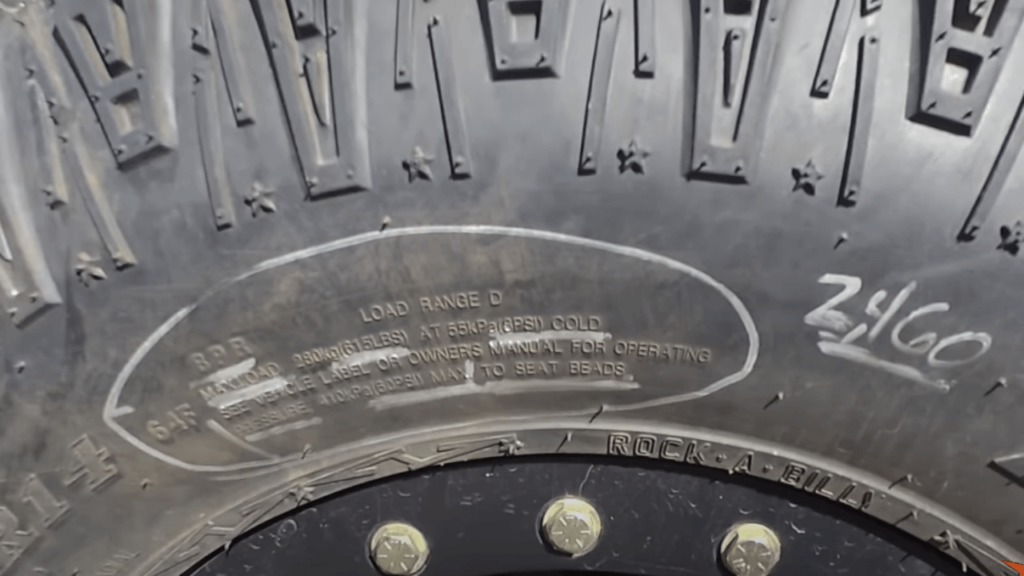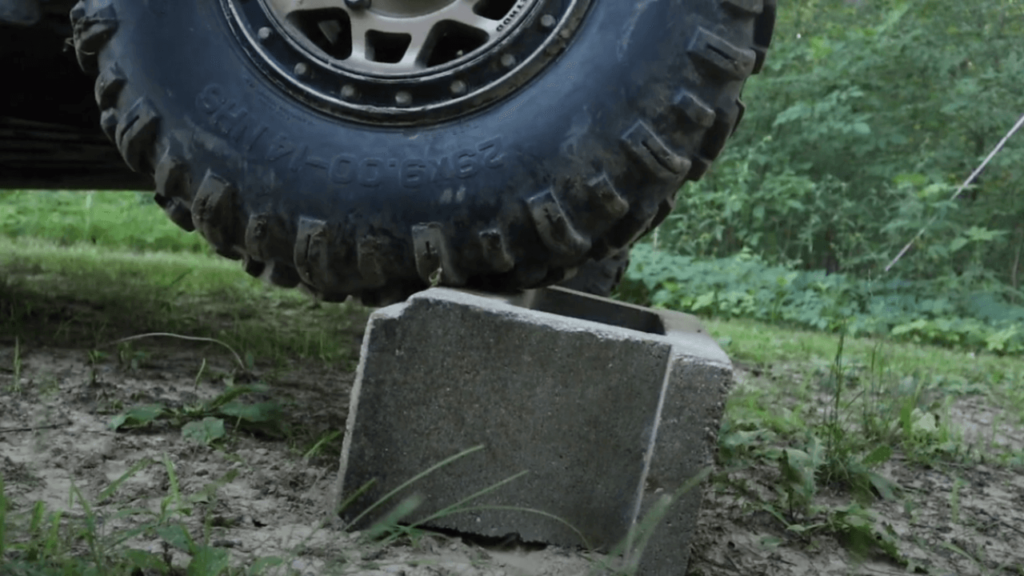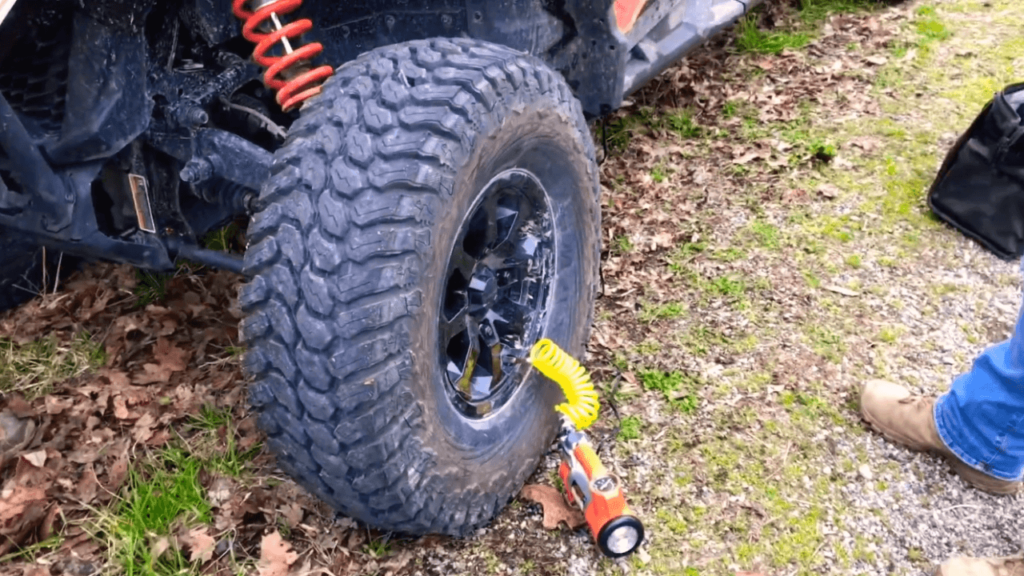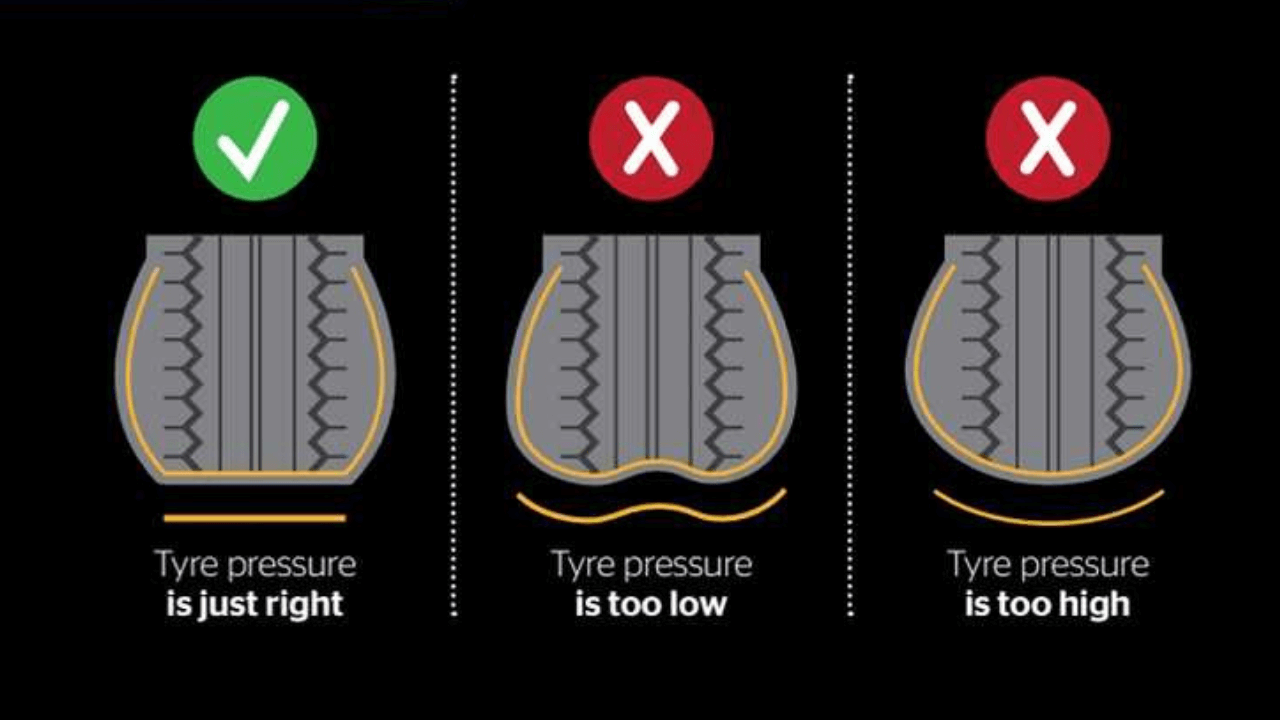Side-by-sides, or UTVs, have become indispensable tools for off-road fans, agricultural professionals, and outdoor enthusiasts. One of the pivotal components that can significantly influence a UTV’s performance is its tires. Specifically, the best UTV tires can deliver optimal results when maintained at the right tire pressure. This pressure acts as the silent powerhouse dictating how a UTV interacts with diverse terrains and conditions. Achieving the proper balance in UTV tire pressure is essential.
Overinflation can reduce ground contact, making the UTV more susceptible to skidding or bouncing. On the other hand, underinflation can expose UTV tires to potential punctures and hastened wear. Additionally, ensuring the correct tire pressure promotes even weight distribution across the tire’s surface, enhancing grip and maneuverability. In a nutshell, to maximize the performance of UTV tires, it’s paramount to understand and regularly check the tire pressure for optimal driving conditions and the safety of its riders.
Why is Tire Pressure Important?

“Tire pressure should be checked, and tires rotated periodically. Maintaining the inflation pressure recommended by the manufacturer is extremely important for getting the full life out of the tires.” –UTV maintenance and safe use Virginia Polytechnic Institute and State University.
One enduring memory transports me to the challenging terrains of the Uinta Mountains in Utah. Tire pressure, a factor many off-road enthusiasts sometimes neglect, has been a fundamental aspect of my vehicle maintenance. It goes beyond just ensuring the tires are adequately filled; it’s about grasping the nuanced interplay between the tire and the diverse landscapes it traverses.
The terrain can unpredictably transition from rocky outcrops to slippery mud trails in the Uinta Mountains. The tire’s contact patch — the section that touches the ground — becomes an essential safety gauge. On one memorable occasion, I underestimated the significance of tailoring my tire pressure to the conditions. The outcome? Diminished grip on a slick, rain-drenched pathway. That day served as a potent reminder that optimal tire pressure is crucial for keeping your vehicle steady and agile, no matter what obstacles nature presents.
However, the implications extend beyond just traction. During another expedition in the Uintas, I observed my UTV guzzling more fuel than usual after an extended journey. An immediate inspection highlighted under-inflated tires, elevating the rolling resistance and pushing the engine to its limits. Conversely, there were instances when I inflated too much, hypothesizing it would be advantageous on flatter terrains. Although I enjoyed marginal gains in fuel efficiency, the compromise lay in a more turbulent journey and reduced road grip.
Tire wear, too, is paramount. My escapades in the Uinta Mountains drove home the point that irregular tire wear isn’t merely a superficial concern. It impacts braking, maneuverability, and the overarching safety of the ride. I’ve witnessed tires degrade prematurely, with the root cause often being improper inflation. The ever-looming threat of punctures, especially when tackling the Uintas’ jagged terrains, cannot be overstated.
UTV Tire Pressure Chart: A Step-by-Step Guide

The UTV tire pressure chart, though seemingly intricate at first glance, is a goldmine of information for UTV enthusiasts. It is your definitive guide to ensure your tires consistently deliver peak performance. Here’s how to decipher this chart in easy-to-follow steps:
Grasp the Basics
At its core, the chart provides tire pressure suggestions based on various factors. It aids riders in tailoring their tire pressure to match specific conditions and requirements.
Determine Tire Size and Model
Before delving further, identify your tire’s size and model. Different sizes and models demand unique pressure settings. For instance, a tire designed for sandy terrains will have different requirements than one for snow-covered tracks.
Account for the Load
Planning to haul extra gear or maybe an additional rider? The weight your UTV supports directly influences the ideal tire pressure. The chart offers guidance on adjusting pressure based on the weight you intend to carry.
Acknowledge Environmental Variables

Some detailed charts consider factors like altitude and temperature. Keep in mind that air pressure changes with increasing altitude or dropping temperatures. An exhaustive chart will advise you on modifying tire pressure in such situations.
Cross-Check with Manufacturer’s Advice
While the chart serves as an excellent general reference, it’s vital to also consult your manufacturer’s guidelines. They might offer specific pointers tailored to their tire models, ensuring you obtain the most precise pressure suggestions.
Stay Updated
Tire technologies and recommendations aren’t static; they evolve over time. Make sure you consult the most recent charts and stay informed about any advisories from your tire manufacturer.
To sum it up, the UTV tire pressure chart is not just a compilation of figures. It’s an essential tool, steering you towards ensuring your UTV’s tires remain in top-notch condition, primed to face any challenge that comes their way. Equipped with this understanding and a dependable tire pressure gauge, you’re on track for numerous seamless journeys ahead.
UTV Tire Pressure Guide: Tailoring Pressure for Varied Terrains
The tire pressure of a UTV can significantly influence its performance, especially when traversing different terrains. Adjusting the pressure according to the specific conditions is essential to ensure optimal traction, fuel efficiency, and tire longevity. Here’s a revamped table that provides a comprehensive guide on the recommended tire pressure for various road conditions:
| Terrain Conditions | Suggested UTV Tire Pressure |
| Compact or Medium-Grade Surfaces | 13-16 PSI |
| Off-Road Trail Expeditions | 13-16 PSI |
| Asphalt or Tarmac Drives | 19-23 PSI |
| Technical Terrains or Bouldering Adventures | 7-11 PSI |
| Stony Pathways | 13-16 PSI |
| Rapid Desert Rides | 17-21 PSI |
| Wet or Marshy Grounds | 7-11 PSI |
| Competitive Racing | 17-21 PSI |
| Sandy Expenses | 9-13 PSI |
| Frosty or Icy Surfaces | 7-13 PSI |
Remember, while this table offers a general guideline, it’s always a good practice to cross-reference with your UTV’s manual or manufacturer’s recommendations to ensure the best performance and safety.
Benefits of Proper Tire Pressure
Maintaining the appropriate tire pressure in your UTV isn’t a mere triviality; it’s a paramount consideration that yields many advantages, ensuring that your vehicle functions at its zenith. Let’s explore the myriad benefits of appropriate tire pressure:
Optimal Performance: Proper tire pressure guarantees that your UTV’s tires establish optimal contact with the terrain. This ideal footprint ensures that your vehicle reacts promptly and adeptly, whether accelerating, braking, or maneuvering turns. The outcome? Smoother rides, superior handling, and a more immersive driving experience.
Enhanced Fuel Efficiency: Tires inflated to their precise requirements minimize rolling resistance. When faced with reduced resistance, the engine can operate more effortlessly, improving fuel efficiency. In the long haul, this can equate to considerable savings, both monetarily and in environmental conservation.
Extended Tire Lifespan: Correct tire pressure facilitates uniform tire wear. Uniformly worn tires tend to outlast their unevenly worn counterparts, offering monetary savings and diminishing the need for frequent tire replacements. Tires upheld at the recommended pressure are less susceptible to punctures or sidewall failures.
Safety: This is arguably the most pivotal advantage. Appropriate tire pressure assures that your UTV achieves maximum traction, minimizing risks like skidding or loss of control, especially in demanding landscapes or inclement weather. Moreover, tires inflated correctly are less prone to blowouts – a hazardous event potentially culminating in grave mishaps.
Diminished Carbon Footprint: Superior fuel efficiency is not solely a financial boon; it also translates to decreased carbon emissions. By preserving the correct tire pressure, you’re championing peak performance and contributing positively to the environment.
Cost Savings: Over time, upholding the right tire pressure can result in substantial financial benefits. The fiscal advantages are evident from dwindling fuel expenses to prolonged tire longevity and reduced maintenance charges.
Common Mistakes to Avoid in Tire Maintenance

Though it may appear straightforward, tire maintenance is fraught with nuances that can undermine your tires’ performance, safety, and lifespan. Recognizing these common blunders can shield you from unwarranted expenses and potential risks. Let’s unpack some of these prevalent oversights and their remedies:
Overlooking Regular Checks: A frequent misjudgment is the omission of regular tire pressure inspections. Tires innately lose air over time. They can become under-inflated without consistent checks, culminating in accelerated wear and diminished fuel efficiency.
Dependence on Visual Assessment: A prevailing notion is that tire pressure can be gauged simply by its appearance. While a drastically deflated tire might be discernible, subtle deviations that can still hamper performance aren’t as evident. A dependable tire pressure gauge is indispensable.
Over-inflation: In the pursuit of superior fuel efficiency, some may over-inflate their tires. This reduces tire-road contact, causing a jarring ride, diminished traction, and central tire wear.
Under-inflation: On the flip side, under-inflation, typically due to oversight, augments friction and heat generation. This can expedite wear and even cause blowouts. Additionally, an under-inflated tire has an expanded contact area, hampering fuel efficiency.
Sidestepping Tire Rotation: Neglecting tire rotation paves the way for disparate wear patterns. Given the uneven weight distribution in most vehicles, tires deteriorate at varying paces. Regular rotation ensures uniform wear, prolonging tire life.
Forgetting the Spare: The spare tire often remains out of sight and out of mind. Neglecting its maintenance can result in a rude awakening when it’s in dire need — and found to be flat or compromised.
Employing Mismatched Tires: Substituting just one tire with a variant that doesn’t match the rest in terms of type or brand can skew the vehicle’s dynamics. It’s prudent to replace tires in pairs or, optimally, a full set simultaneously.
Conclusion
Journeying through the expansive terrains of the Uinta Mountains in Utah remains a pinnacle experience in my career as a seasoned UTV rider. Yet, with every adrenaline-fueled adventure comes an irrefutable understanding of tire maintenance’s paramount importance. Within vehicle care, tire upkeep isn’t merely an afterthought—it’s fundamental.
The Uinta Mountains, characterized by their velvety trails and daunting rocky terrains, underscored the tire’s pivotal role—the chief intermediary between my UTV and the rugged earth below. Whether leisurely traversing a tranquil route or tackling a difficult incline, the state of my tires was the linchpin affecting ride quality, safety, and efficacy.
Throughout my tenure in the UTV riding domain, I’ve delved deep into the nuances of UTV Tire Pressure, grasping its profound implications and the habitual snags that many, including myself, sometimes encounter. Yet, transcending the charts, instruments, and mechanical intricacies lies a cardinal ethos I’ve learned to cherish: the meticulousness I accord to my tires is synonymous with the excellence of my riding odyssey. Amid the Uintas, adhering to optimal tire pressure, routine rotations, and consistent inspections wasn’t solely about amplifying my UTV’s prowess—it underscored a commitment to safeguarding my well-being and that of fellow trailblazers.
Furthermore, as an enthusiast intimately intertwined with nature’s splendor, the environmental facets of tire stewardship resonate deeply. Traversing the unspoiled vistas of the Uinta Mountains has fostered an inherent stewardship in me. Prudent tire maintenance, culminating in superior fuel economy and minimized environmental footprint, symbolizes my homage to the pristine terrains I so cherish.
FAQ About UTV Tire Pressure
What is the ideal tire pressure for my UTV?
The ideal tire pressure varies based on the UTV model, tire type, and the terrain you’re navigating. Always refer to the manufacturer’s recommendations and adjust based on specific conditions.
How often should I check my UTV’s tire pressure?
It’s advisable to check tire pressure at least once a month and before any long trips or challenging rides. Remember, tire pressure can fluctuate with temperature changes and altitude.
Why does my UTV’s tire pressure seem to change with the seasons?
Tire pressure can be affected by temperature. Cold weather can cause the air inside the tire to contract, leading to reduced pressure, while warm weather can cause the air to expand, increasing the pressure.
Can I use the same tire pressure for different terrains?
No, different terrains require different tire pressures for optimal performance and safety. For instance, rocky terrains might require a lower pressure for better grip, while smooth roads might need higher pressure for improved fuel efficiency.
Is over-inflation as bad as under-inflation?
Yes, both overinflation and under-inflation have their drawbacks. Over-inflated tires can lead to reduced traction, a bumpier ride, and uneven wear in the center of the tire. Under-inflated tires can increase fuel consumption, wear out faster, and risk blowouts.
How can I ensure consistent tire pressure across all tires?
Use a reliable tire pressure gauge and check all tires in similar conditions, preferably when cold. Ensure you’re using the same gauge each time for consistency.

